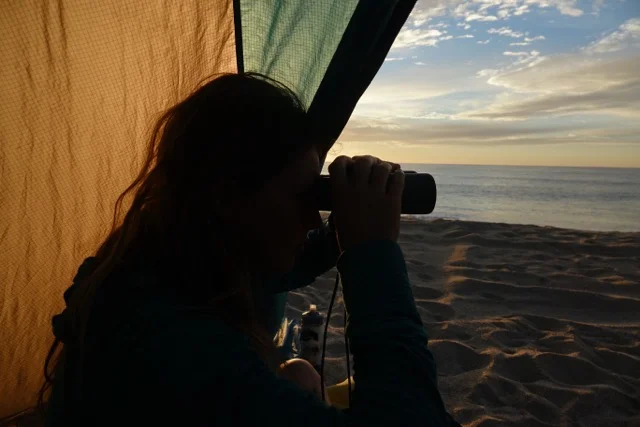Migrations
Scientific Illustrator, Mara Menahan, follows the wild things, from the Tongass to the Sierras of the Baja Peninsula:
Mara joins the Last Stands team as an artist working in the tradition of natural history illustration. Currently she is painting the variations of light and color on the Greenland ice sheet while working seasonally at Summit Station, a National Science Foundation research camp. Mara will travel to the Tongass this spring, direct from Greenland.
After chasing Elsa through the rainforest in late summer of 2017, I followed the rufous hummingbirds and humpback whales from Alaska down to the opposite end of their ranges to find them feasting on agave nectar in the Sierras of the Baja peninsula and calving in the turquoise waters of the Sea of Cortez. Over the past two winters, I have ridden over 2,000 miles of Baja's backcountry tracks and roads, traversing the length of the Mexican peninsula by bicycle while painting the region’s endemic flora and fragile desert landscape (a sneak peek of this ongoing illustration project can be viewed here). Seeing these species so far away from where I first saw them in Alaska shows how changes in a remote northern archipelago will send shockwaves along the Pacific coast into Mexico and beyond.
Rufous hummingbirds migrating from Alaska to Mexico depend on blooming agaves and other endemic species of the Baja Peninsula in the winter month
Mara watches humpback whales at first light on the Sea of Cortez.
Travelers and migrating animals have a privileged view of the warp in the weave of earth, sea and sky. When John Steinbeck joined his naturalist friend Ed Rickets on a boat journey along the coastlines of the Baja peninsula, he wrote that, “. . . all things are one thing and that one thing is all things—plankton, a shimmering phosphorescence on the sea and the spinning planets and an expanding universe, all bound together by the elastic string of time. It is advisable to look from the tide pool to the stars and then back to the tide pool again.”
That is some advice I can follow. Returning to the cold waters of Southeast Alaska this spring will be one wild reunion.



